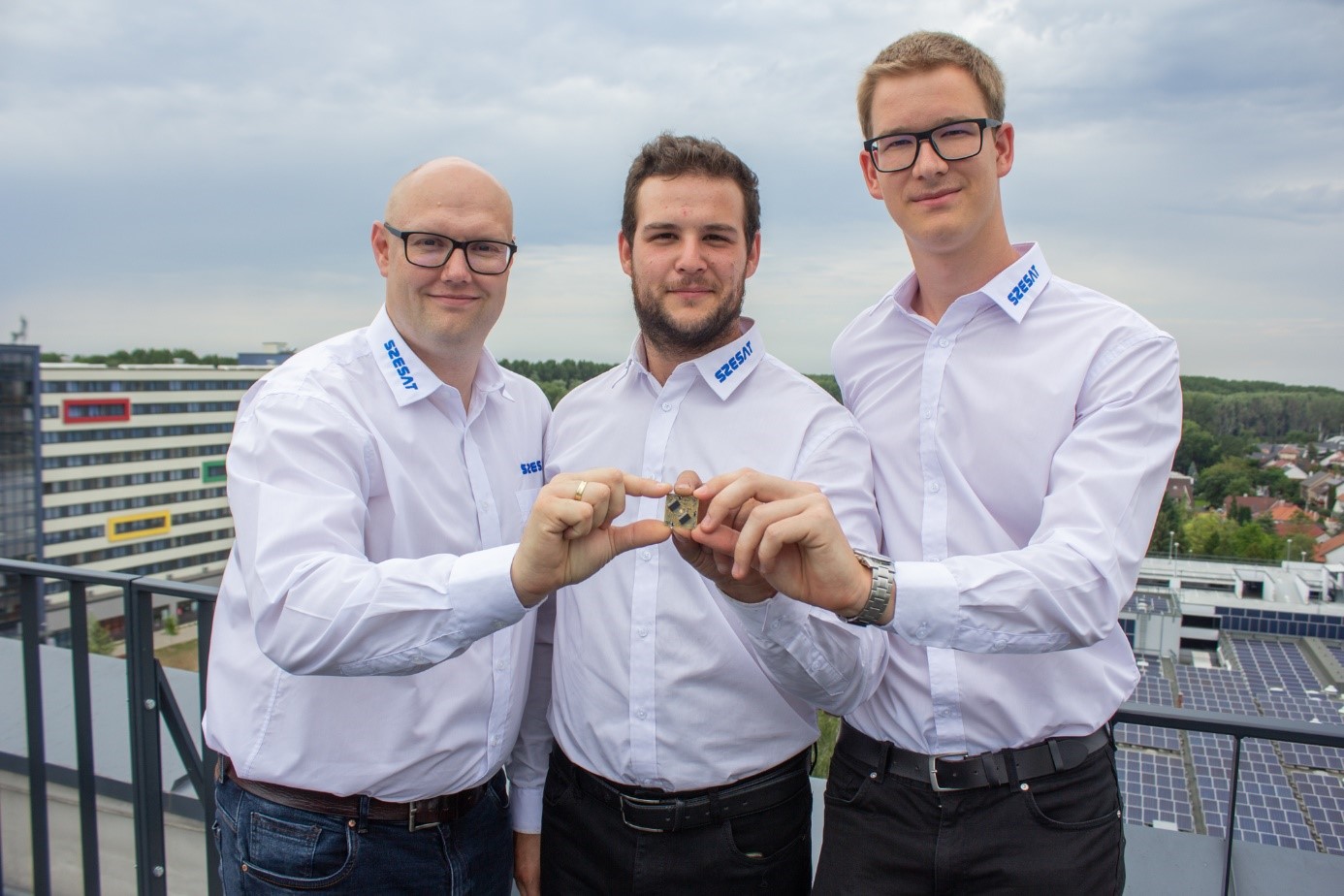When the SZE-SAT team of Széchenyi István University was founded, it set itself the goal of putting a satellite of its own design into the sky. The students have reached an important stage in this process, as they have completed and tested the module that will soon be able to broadcast the name of the institution and Győr to the countries of the world, announcing that Széchenyi István University has entered space. In December, the satellite of the Budapest University of Technology and Economics (BME) will carry the Győr-developed communication panel into the cosmos.
The SZE-SAT section of the Jedlik Ányos Vocational Hall of Residence of Mechanical and Electrical Engineering at Széchenyi István University undertook the task of creating a 30 by 30 by 3-millimeter panel to transmit short text messages to Earth in order to improve data communication within the satellite.
"We heard about the opportunity at the end of last year, and by the beginning of this year, we knew for definite what parameters we had to meet. Then we started working on the project at full speed, and by February we had already completed our zero panel," reminisced Gábor Marton, who graduated from the University with a degree in Automatization in 2007 and thus coordinated the students' work as a Széchenyi alumnus. He added that they had to overcome several difficulties, such as the lack of chips or rethinking their concept, but in the end, they solved the task with real teamwork.

Gábor Marton, Martin Magda and Dániel Keresztény with the communication mini-module being prepared
for space (Photo: Márton Horváth)
By the beginning of summer, the team had produced several modules and subjected the development to various tests. During thermal shock testing, the panel was briefly exposed to two temperature extremes, minus 40 and plus 60 degrees Celsius, and then continuous temperature changes were generated in the climate chamber, but also vibration shock testing was carried out to simulate the conditions expected at launch and in space. The device was also subjected to X-ray and CT scans to ensure the quality of the soldering.